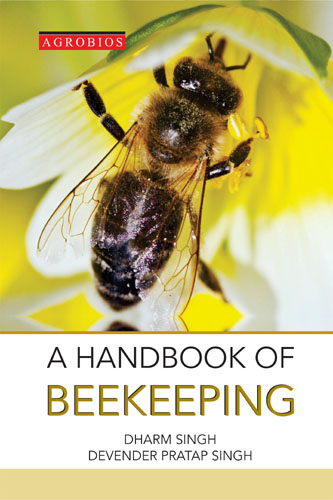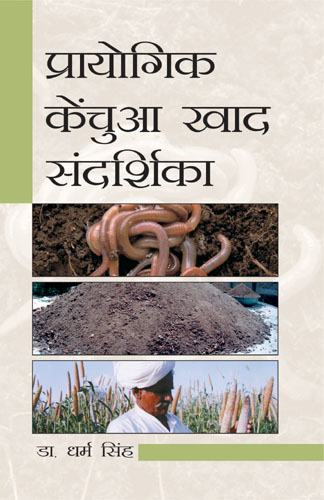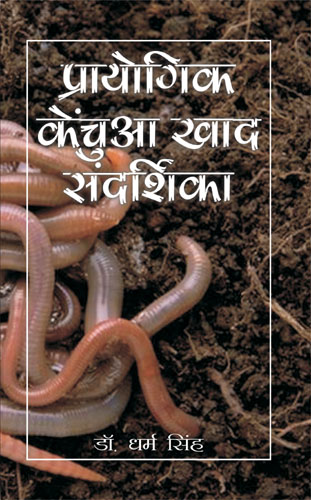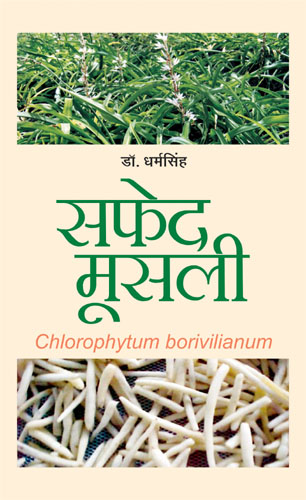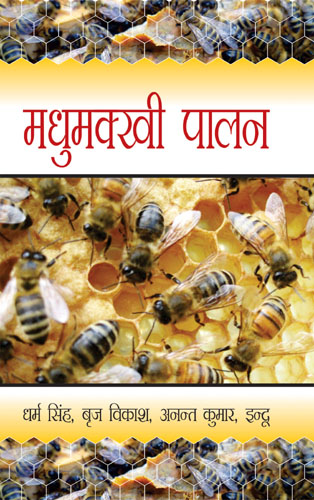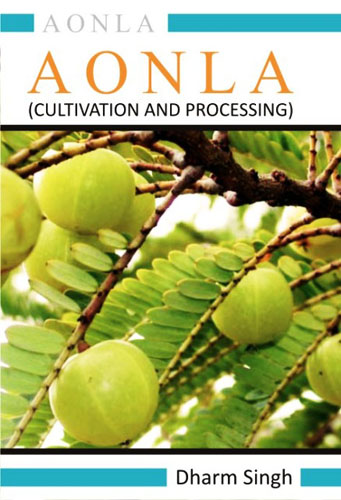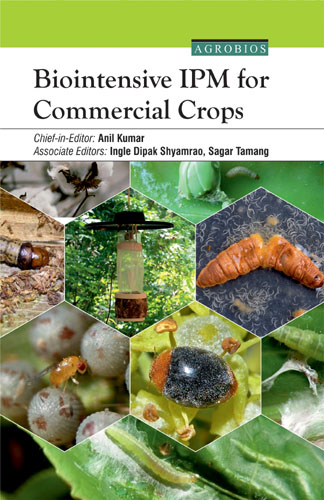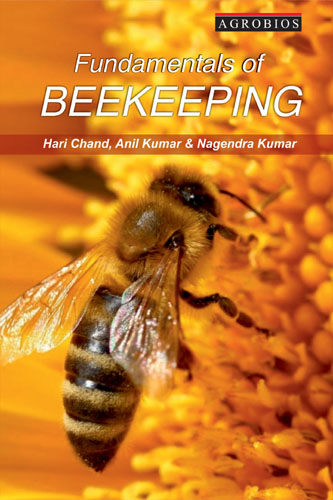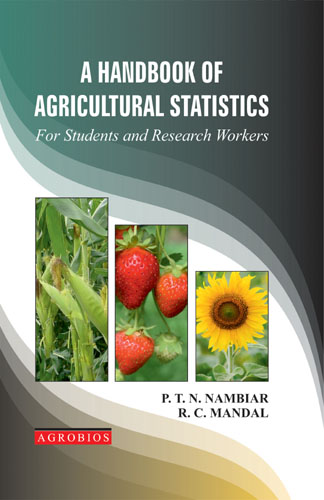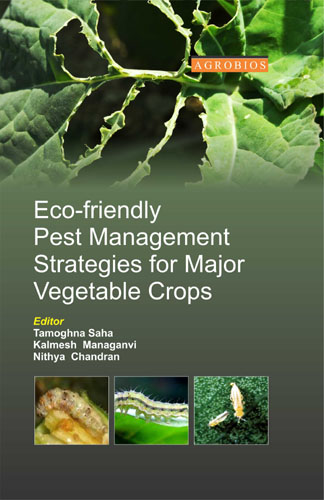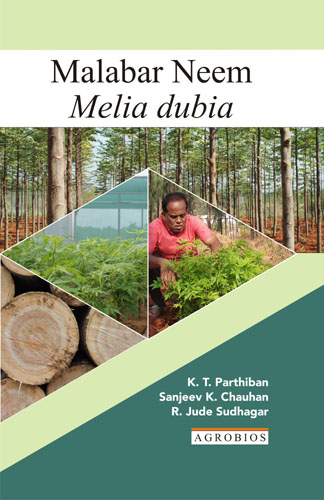A Handbook Of Beekeeping
Agriculture is the backbone of Indian economy. Nearly 70% of human population is dependent on agriculture. In the initial plans, huge investments were made in agricultural research and development as a result of which India became self-sufficient in food grain production. Special emphasis were also given to develop various agro based enterprises like dairy, poultry, fish farming, sericulture and beekeeping with a view to maximize farm-income and self-employment. Out of these, beekeeping industry received inadequate attention resulting its poor development in India.
It is a proven fact that beekeeping improves the economic condition of the farmers, restrict the migration of rural youth to urban areas and helps in holistic development of rural society. It is the only enterprise which did not create any problem to the nature, does not require more capital investment and skilled labour. This profession can be successfully adopted by well to do as well as small/marginal farmers, farm-women, landless labourers, rural unemployed youth and retired or in-service personals. This enterprise has minimum land and structural requirement. Initial cost to start this profession is also very nominal and recurring cost in neglible. It is suitable for rural tribals and other weaker sections of human society.
The honey bees play a vital role in upliftment of crop production through cross pollination. They can fly 50,000 miles and visit 5,000,000 blossoms to gather enough nectar to produce about 400 450 gm of honey, which is stored not for themselves but for the survival of the colony. It is estimated that India has 50 million hectares under cross pollianted crops that are benefitted by Honey bees pollination 3 to 9 bee colonies depending of crop per hectare are generally required for adequate pollination. Even if a minimum of 3 colonies per hectare are considered essential, then about 150 million colonies would be needed for assured pollination of 50 million hectare crops. Against this requirement, only 1 million bee-colonies are available at present. On the other hand, the population of wild insect pollinators is on the decline because of reduction in hibernating and nesting places due to intensive agriculture, deforestation, cleaning of wastelands and indiscriminate use of pesticides. It is, therefore, considered necessary to promote and develop beekeeping industry in India for breakthrough in agricultural production, self-employment generation and socioeconomic upliftment in rural areas.
For proper beekeeping development in our country, it is very important to provide scientific proven technology of beekeeping to beekeepers and create mass awareness in potential areas at National level. Although, various books on beekeeping are available in India, but authentic, practical And precise informations are still lacking for most of the Indian beekeepers. This manuscript is intended to provide practical information on various aspects in precised and digestible form. Various key issues have been discussed to make it very useful to every beekeeper, farmer, student, scientist, planner and policy maker.
Dr. Singh Dharm
555
Table of Contents..
- Introduction to Beekeeping Industry
- History and Growth of Beekeeping
- Importance and Future Prospects of Beekeeping
- Problems and Future Strategies of Beekeeping Development
- Role of Beekeeping in Crop Productivity Improvement
- Equipments and Appliances for Beekeeping
- Origin and Classification of Honeybees
- Species of Honeybee and their Castes
- Anatomy of Honeybees
- Lifecycle of Honeybees and Division of Labour
- Protective and Communication System of Honeybees
- Behaviour and Senses of Honeybee
- Climate and Resource Needs for Beekeeping
- Seasonable Management of Bee Colonies
- Special Bee Management Operations
- Multiplication of Honeybee Colonies and Commercial Queen Rearing
- The Enemies of Honeybees
- Diseases of Honeybees and their Management
- Pesticidal Poisoning in Honeybees and its Counter Measures
- Honeybee Products and their Values
- The Honey
- Extraction, Handling, Processing and Storage of Honey
- Granulation and Fermentation of Honey
- Royal Jelly Production and Processing
- Marketing Prospects of Bee-Hive Products
Table of Contents..
5.
6.
7.
Importance and Future Prospects of Beekeeping
Chapter - 3. | Subject Topic: Importance and Future Prospects
Chapter - 3. | Subject Topic: Importance and Future Prospects
8.
Problems and Future Strategies of Beekeeping Development
Chapter - 4. | Subject Topic: Problems and Future Strategies
Chapter - 4. | Subject Topic: Problems and Future Strategies
9.
Role of Beekeeping in Crop Productivity Improvement
Chapter - 5. | Subject Topic: Role of Beekeeping
Chapter - 5. | Subject Topic: Role of Beekeeping
10.
11.
12.
14.
15.
Protective and Communication
System of Honeybees
Chapter - 11. | Subject Topic: Protective and Communication System
Chapter - 11. | Subject Topic: Protective and Communication System
16.
17.
18.
19.
20.
Multiplication of Honeybee Colonies
and Commercial Queen Rearing
Chapter - 16. | Subject Topic: Bee Colonies
Chapter - 16. | Subject Topic: Bee Colonies
21.
22.
23.
Pesticidal Poisoning in Honeybees
and its Counter Measures
Chapter - 19. | Subject Topic: Pesticidal Poisoning
Chapter - 19. | Subject Topic: Pesticidal Poisoning
24.
26.
Extraction, Handling, Processing
and Storage of Honey
Chapter - 22. | Subject Topic: Honeybee Products
Chapter - 22. | Subject Topic: Honeybee Products
27.
28.
29.
Book Details
Book Title:
A Handbook Of Beekeeping
A Handbook Of Beekeeping
Book Type:
HANDBOOK
HANDBOOK
No Of Pages:
312
312
Color Pages :
0
0
Color Pages :
0
0
Book Size:
DEMY (5.5X8.5)
DEMY (5.5X8.5)
Weight:
500 Gms
500 Gms
Copyright Holder:
All Right Reserved
All Right Reserved
Imprint:
M/s AGROBIOS (INDIA)
M/s AGROBIOS (INDIA)
Readership:
ENTREPRENEURS | EXTENSION WORKERS | FIELD WORKERS | GENERAL READERS | PG STUDENTS | SCIENTISTS AND RESEARCHERS | UG STUDENTS |
ENTREPRENEURS | EXTENSION WORKERS | FIELD WORKERS | GENERAL READERS | PG STUDENTS | SCIENTISTS AND RESEARCHERS | UG STUDENTS |



